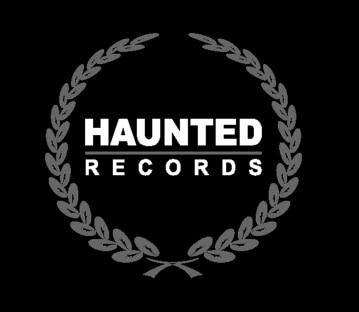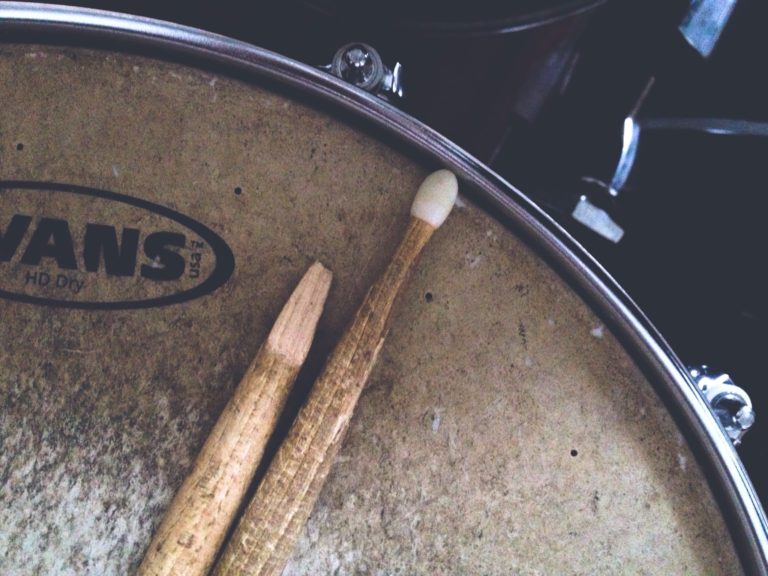What Type of Record Deals are Available
Learning about the types of record deals available in the music industry can be a lot. After all, there’s more than you might know.
There are many types of record deals available aside from a traditional contract with 360 deals covering all aspects of your career, indie records taking on the mainstream or specialized services like production, distribution or licensing deals.
The industry has diversified tremendously over the past few decades. To the point that just signing with a traditional record label doesn’t cut it anymore.
Deals involve working with major sponsors, labels, and producers and going it alone. There’s a lot to consider when any exchange is offered. So what types of deals are available in the industry today?
The types of record deals
There’s no shortage of different types of deals around today. As the industry has evolved, more and more different contract types have emerged. It’s not uncommon to see all kinds of deals offered around, including:
- Traditional
- 360
- 50/50
- Development
- Production
- Licensing
- Distribution
- Self-publishing
There’s a lot to consider when putting together a deal itself. Some contract types cover everything an artist would need. These “traditional deals” give an artist the full backing of a major label (e.g., Universal, Sony, etc.) and get the chance to earn millions. These similar structures arise for even just a single release.
More and more bands are pushing away from that and may split particular aspects of a deal. That could include single elements such as licensing, production, or record distribution. It’s a ploy many artists use to break into particular markets. So what do all of these entail?
Traditional record deals for musicians
If someone says a record deal, then this is generally what they are talking about. A full-blown deal with a record label that covers everything you need to make an album. This covers all aspects you could think of, including:
- Production & recording
- Licensing and publishing
- Marketing & promotion
It’s pretty simple in how it works too. A label will approach an artist and state their case. They’ll present an artist with a fixed contract for several years or albums. Once signed, artists will essentially give all the rights to their work to the label itself.
In payment for what they produce, an artist is given an advanced fee and royalties for how it performs. This means the artist receives a set payment for their work, which increases based on how much it sells.
It’s a deal that acts as a double-edged sword. Artists have to give up the rights to their creative output, but everything they need is taken care of. It’s a very sales-driven platform that earns big money when things pan out but leaves labels cash-strapped if they don’t.
Single deal
A spinoff from traditional deals is a trend known as a single deal. Unlike their fuller traditional counterparts, a single deal sees a performer sign with a label to produce one-off releases. This can be just one song or a string of non-album tracks if the first is a smash hit.
With streaming platforms and social media allowing one-off hits to rocket up the charts, both parties can capitalize on viral success, even if it lasts just a few months. For labels, it’s a chance to test the water of potential artists without making significant commitments right away. Meanwhile, artists can get the opportunity to break into the mainstream and see how they fare.
For example, this is what YouTube act LadBaby has done in the UK to score multiple number-one records in the UK. Signed to FrtyFive Records (an offshoot of Warner Music), the act has covered classic songs and tweaked them to a food-based theme. Covered hits such as Starship’s “We Built This City” are part of this, allowing the British streamer a new avenue of success many didn’t think possible.
360˚ deal
To try and capitalize on more than just sales, record labels created a “360˚ deal” to envelope everything an artist may own.
360˚ deal means that artists give their record label a set fee for everything they do – not just from album sales. This includes:
- Endorsement fees
- Touring revenue
- Copyright royalties
These record deals are essentially a way to manage an artist in every aspect of their life. These deals are typical in Asia with major K-Pop or J-Pop bands, where one company earns everything from what a band does.
For example, K-Pop sensations Blackpink are signed to YG Entertainment – a fully-formed public company in South Korea. YG’s whole purpose is to be a talent agency designed to manage an artist’s career. Not only do YG earn money from their album sales, but they also earn revenue based on what the band generates from areas such as touring and streaming.
These record deals bring in big money for whoever agrees to work a deal on such terms. It’s a deal that more and more companies look to offer and brings in billions for labels when everything syncs perfectly.
50/50 deal
If artists and record labels hit a wall in contract negotiations, then a 50/50 deal is a platform that might work best for both entities.
Instead of going all in with a label, a 50/50 deal sees an artist take on half the responsibility of everything in the agreement. What this does is give artists a bit more control over what they are putting together.
It does mean that both parties will split everything equally towards one another. This means that artists will get more from the sales of an album. However, they will be expected to contribute towards making the album too.
This deal is often seen with smaller independent labels looking to land a big star in their catalog. It gives artists a chance to get more than the average 10-20% in royalties and provides a label with a way to steal the headlines from a much larger rival. It’s why this form of the deal has slowly surged in popularity.
Development deal
As the name suggests, a development deal is about finding the next big thing. It’s a way for many A&R scouts to see if their picks are suitable for signing to an actual full-time deal.
Development deals will see a label give an artist a chance to shine when given an expanded platform to benefit from. This sees labels letting artists record many demos in a major studio and gauge the reaction to what is produced.
If a demo or even an EP gets good rotation and reviews, the deal is often upgraded into a full-blown contract. However, a lukewarm response can see bands let go without fanfare. It’s a low-risk option for trying out potential megastars.
Partial record deals
As artists have pushed more and more for success, it’s becoming increasingly common for artists to sign exclusive record deals with different parties for different aspects of their careers. This covers different platforms, such as licensing, distribution, and production. But how do each of these work?
Production deal
A production deal is straightforward in design. It’s where an artist will sign a specific agreement with a producer to help record and put together an album.
Production deals often tie artists into working with the producer and whoever they might be aligned with. The producer then picks up the costs to make the album and gives them a greater say on who puts it together.
These deals give upcoming artists an excellent springboard into the mainstream market. Not only do they get the chance to work with industry veterans, but it gives them a chance to use their contact list to move further up the ladder.
Dr. Dre and his work in the hip-hop industry are the best examples of how this has worked. Through his Aftermath Records label, Dre has produced numerous albums for upcoming rappers yet to succeed, including Eminem, The Game, and 50 Cent. These artists have then had their albums picked up by Geffen and Interscope to become chart hits. Not only does Dre get some of the profits, but he has also passed on expertise to new rappers and hip-hop prodigies to storm the charts.
Licensing deals
Image and licensing rights are more important than ever nowadays. It’s why licensing rights are now worth millions in the industry.
A licensing deal gives complete third-party control over an artist’s work for a set fee. After a fee and contract, the artist gives up any rights for royalties to their work. This means whoever purchases the licensing rights gets all the profits from it.
A great example of this was Bob Dylan selling all of his works to Universal in 2020. With a catalog stretching over five decades, the legendary folk-rock artist penned a deal with Universal that gave them full rights to his discography. This unique deal saw Universal pay Dylan an estimated $300 million for the rights to his work.
These deals can also be formed even after an artist has passed away, depending on who has the rights to the work. Take the entire works of David Bowie, for example. The English singer died in 2016, but his estate still owned the rights to the music until nearly six years after his death. In January 2022, Warner Music purchased all these rights for $250 million in an exclusive licensing deal for any use of Bowie’s material.
It shows that some deals can still be worth a lot of money between two parties even if they are not around to decide for themselves.
Distribution deals
Some artists or musicians may have a finished product but cannot get it out to the world. This is where a distribution deal comes into play.
A distribution deal sees a third party (or a digital service provider) present albums to music labels to release them on a broader platform.
As a result, the distributing party can then take a slice of the profits generated by the sales in that area.
These deals are presented when artists want to break into a new territory or region where they might not have succeeded. This way, they can partner with a local provider to try and break into that market.
For example, UNFD Records acted as an international distributor for bands trying to break into the Australian market. The likes of British band Architects and American band Beartooth used the label to release albums on their behalf despite having dealt with other record labels.
In the case of Architects, they were signed with Epitaph around the rest of the world, but the deal with UNFD gave them access to Australian charts for the first time. This deal with UNFD saw their 2014 album “Lost Forever// Lost Together” reach 16 on the ARIA charts and their 2016 album “All Our Gods Have Abandoned Us” reach number 2—a major coup for a band that had never previously charted in the country.
After the distribution deal expired in 2020, Architects subsequently released their albums in Australia through Epitaph, even scoring a number 1 album in 2021 with the release of “For Those That Wish to Exist.”
Independent release
Of course, artists can do the truly independent route if they want to do everything themselves. This sees the artist take everything on their shoulders, giving them complete control of the process.
This means that albums are wholly self-funded, promoted, and released through their efforts. Many people who do this choose to do so under their own label and give their act an independent platform to work off without signing a record deal.
A band that has done this successfully is the English rock band Enter Shikari. The band has self-released every album of theirs through their Ambush Reality worldwide. Having released their first album in 2007, every album has charted in the top ten of the UK Albums Charts, with their 2020 release “Nothing is True & Everything is Possible,” reaching a record chart position of number 2.
It shows that bands can find their own niche and use it to generate a self-sustaining career without relying on labels to generate success.
So what type of record deals are available?
When learning about what type of record deals are available, there are plenty of options to investigate. The industry has come a long way since labels had all the control of mainstream access and deciding who gets what slice of the action.
Indeed, there are plenty of spinoffs from the traditional deal, with single or 50/50 deals providing alternate options for both parties to find agreeable terms. Furthermore, 360˚ deals allow labels or entertainment agencies to branch out further to get more from their talent pool.
Of course, artists can take things and twist them to get a better deal for themselves. When looking to nail the deal for themselves, they can sign exclusive production, licensing, and distribution deals to maximize their potential marketability worldwide. Some may even go it alone and see if they can be that fairytale independent success story.
Either way, there are now more ways to be successful in the music industry than ever before. A lot of that success can be generated by knowing what type of record deals you can discover.









